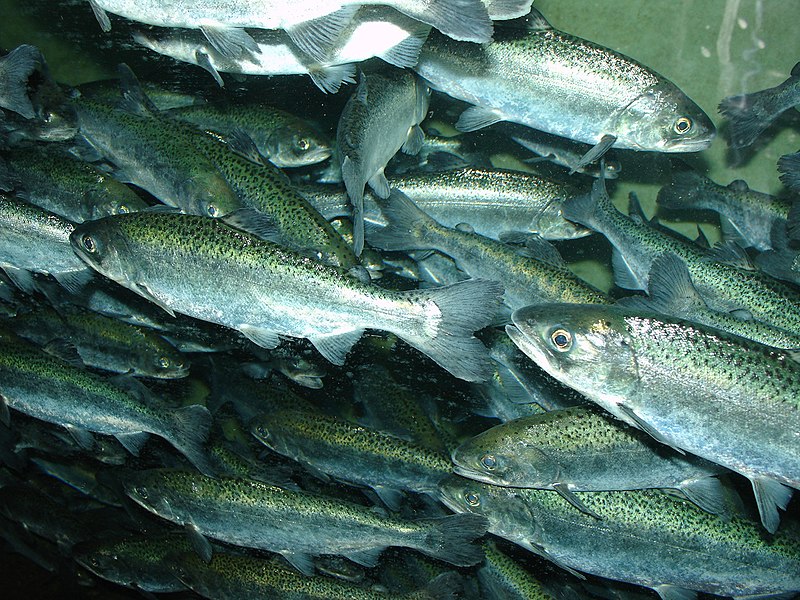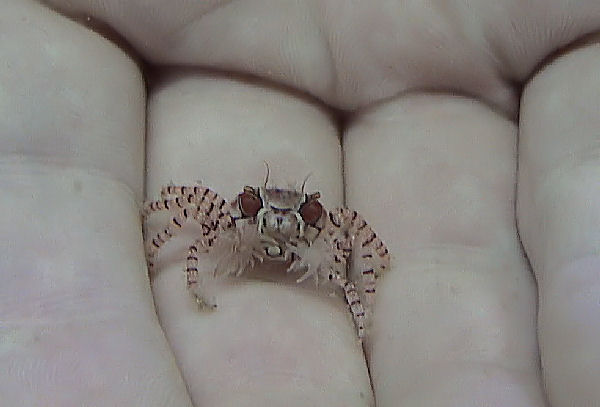 |
| Image courtesy of Dawson |
Tuesday, November 6, 2012
Hawaiian Pom Pom Crab
Thursday, September 27, 2012
Freshwater September: Bowfins
 |
| Photo by Stan Shebs |
Tuesday, September 25, 2012
Spotlight Creature of the Month: Spotted Wobbegong
Thursday, September 20, 2012
Freshwater September: Blue Catfish
Thursday, September 13, 2012
Freshwater September: American Paddlefish
G'day Explorers! As the month of September continues, as does our theme-month for the Creature of the Week. Last week we featured the longnose gar. This week's creature is also an odd shaped and ancient freshwater fish. For week number two of our Freshwater September month, our creature of the week is the American Paddlefish!
Tuesday, September 4, 2012
Freshwater September: Longnose Gar
 |
| Photo by Steven G. Johnson |
Tuesday, August 21, 2012
Slate Pencil Urchin
Tuesday, August 14, 2012
Whale Shark
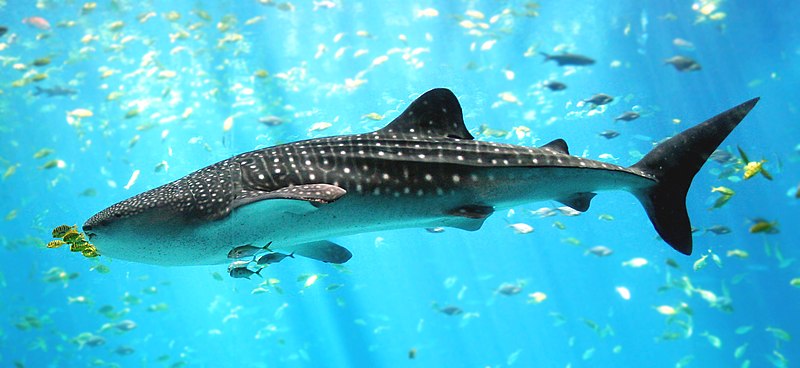 |
| Picture courtesy of Zac Wolfe |
Tuesday, August 7, 2012
Chinook Salmon
Thursday, August 2, 2012
Indo-Pacific Sailfish
Tuesday, July 24, 2012
Goliath Grouper
Tuesday, July 17, 2012
French Angelfish
 |
| Photo courtesy of AES Brittany |
It's time for the Creature of the Week! This week, our spotlight creature is the French Angelfish. The French Angelfish is an omnivorous tropical marine fish that inhabits areas of shallow reefs. The main staples of thei...r diet are sea sponges. The French angelfish has two color morphs: adult and juvenile. The adult coloration is black with yellow on the edges of the scales on the body, around the eyes, a horizontal bar on both pectoral fins, and on the trailing filiment of the dorsal fin. The juveniles are black with verticle yellow bars down the sides of the body. The juveniles actually act as cleaner fish, hanging around cleaning stations until a fish comes to have itself cleaned. French angelfish are monogamous, meaning they pair up and stay together for breeding. In fact, if you see one French angelfish, you would be hard-pressed not to see another one with it. You know what they say, the pair that swims together stays together.
Read more about this reef fish below!
Tuesday, July 10, 2012
Warty Comb Jelly
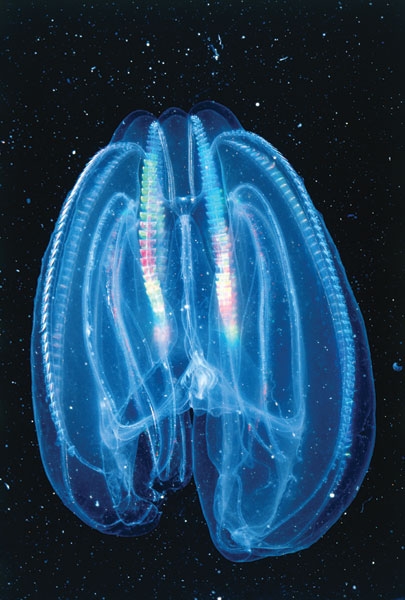 |
| Photo copyrighted by Aquarium of the Pacific |
Hello Explorers! It's time for the Creature of the Week! Did everyone enjoy the lightshows on July 4th? Well, there are plenty of lightshows in the ocean that you can see year-round! One creature that has a way with light is the Sea Wal...nut, also known as the Warty Comb Jelly. Now, comb jellies, or Ctenophores, are not true jellies, and in fact their relationship to other phyla has been highly debated. Comb jellies are known as such because members of the group use rows of cilia (hair-like extensions) that extend down their bodies in eight lines for locomotion. The Warty Comb Jelly is one of the many species of ctenophores that create lightshows in one of two ways: they can bioluminesce blue-green down their cilia when disturbed, and during the day their cilia rows refract light into rainbow like patterns. Warty Comb Jellies are native to the North and South American Atlantic coasts. Unfortunately, these voracious predators have invaded European coasts, and have become a problem on the fish and invertebrate populations. See, the comb jelly feeds on fish and invertebrate larvae, with an individdual being capable of eating up to 10 times its weight per day.
To read more on the Warty Comb Jelly, follow the link below:
And to see a real light show, watch below!
Tuesday, June 26, 2012
Loggerhead Sea Turtle
_2.jpg/800px-Loggerhead_Sea_Turtle_(Caretta_caretta)_2.jpg) |
| Photo courtesy of Brian Gratwicke |
Apologies for the long hiatus, but it is time again for the Creature of the Week! In honor of our PCB trip, our creature this week is the Loggerhead Sea Turtle! The Loggerhead Sea Turtle lives its entire life in the ocean..., distributed across the world from the Pacific Ocean to the Atlantic, as well as the Indian Ocean and the Mediterranean Sea. Only the females ever come to shore and that is only to lay their eggs: about four clutches every two to three years. Loggerheads can live up to 67 years, and averages around 35 inches in length (though there have been records of individuals that measured 110 inches!). These turtles are generally have a reddish-brown shell and yellowish-brown skin. Loggerheads are omnivores, meaning they eat a variety of plant and animal life, though they generally prefer invertebrates. Sadly, these reptiles are listed as endangered due to such things as overhunting, getting tangled in fishing line, consuming trash, and having their eggs harvested.
Read more about these fascinating marine reptiles below:
Thursday, June 7, 2012
Common Remora
 |
| Photo Courtesy of NOAA CCMA Biolgeography Team |
G'day Explorers!
It's time for what I am sure is your favorite part of the week: The Critter of the Week! This week's critter is the Common Remora.
Common remoras belong to the family Echeneidae, whose members are marine fish that can clin...g to other fish via a suction-cup like structure on their heads. For the common remora, this structure is actually a modified dorsal fin that suctions to a larger fish. Yes, these fish are hitchikers. While the "carriers" aren't believed to be negatively impacted by the clinging remoras, the remoras actually have it pretty good. Not only do they get a ride (and moving water to flush over their gills), but they also can get scraps of food and protection by riding on a larger animal. Remoras have been seen attached to whales, dolphins, sharks, mantas, swordfish, and sea turtles. Like that of many pelagic species, the reproductive behavior of the common remora, and its relatives, is largely a mystery. (It can be difficult to study the behavior of fish that live in the open ocean). Here's an interesting fact about remoras: some cultures actually use them to catch fish or turtles by tying a rope to the remora's tail, letting it swim out to a large fish or turtle, waiting until the remora has attached to the fish or turtle, and then reeling the rope back.
It's time for what I am sure is your favorite part of the week: The Critter of the Week! This week's critter is the Common Remora.
Common remoras belong to the family Echeneidae, whose members are marine fish that can clin...g to other fish via a suction-cup like structure on their heads. For the common remora, this structure is actually a modified dorsal fin that suctions to a larger fish. Yes, these fish are hitchikers. While the "carriers" aren't believed to be negatively impacted by the clinging remoras, the remoras actually have it pretty good. Not only do they get a ride (and moving water to flush over their gills), but they also can get scraps of food and protection by riding on a larger animal. Remoras have been seen attached to whales, dolphins, sharks, mantas, swordfish, and sea turtles. Like that of many pelagic species, the reproductive behavior of the common remora, and its relatives, is largely a mystery. (It can be difficult to study the behavior of fish that live in the open ocean). Here's an interesting fact about remoras: some cultures actually use them to catch fish or turtles by tying a rope to the remora's tail, letting it swim out to a large fish or turtle, waiting until the remora has attached to the fish or turtle, and then reeling the rope back.
Find out more about these "sucker fish" here:
Tuesday, May 29, 2012
Sea Squirt
 |
| Photo courtesy of AES Brittany |
Hello Explorers! It's time for the Critter of the Week! Now, I have noticed there is a slight biased toward the recognizable critters thus far.
So, this week, it is time to bring you all something that may blow your mind! Instead of ju...st one critter, this name refers to a phylogenetic class that includes over 2300 species! I present, the humble sea squirt. Yes, that's right, the Sea Squirt. "Sea Squirt" is a common name that refers to the class Ascidiacea, which belongs to the subphylum tunicata, otherwise known as the tunicates.
Sea squirts are filter-feeding marine invertebrates that basically look like small sacs. As adults, they stick to a rock and prefer to remain attached the rest of their lives. The reason these animals are called sea squirts is because on the upper part of these sac like animals are two siphons. If one of these animals happen to be removed from the water, it will squirt water violently from these siphons. At first glance, these animals seem to be simplistic, perhaps pretty to look at, but nothing too special. However, there is something very special about sea squirts and the rest of the tunicates...
In the phylogenetic tree, which is the term applied to tracing the evolutionary relations of life (Kingdom, phylum, class, order, family, genus, species), tunicates and "vertebrata" (which include fish, amphibians, reptiles, birds and mammals) are sister subphylum. This means that tunicata and vertebrata shared a common ancestor from which the two subphyla split. Not only that, but Tunicates are closer related to vertebrata than to any invertebrate group. So think about that next time you see a sea squirt, and be sure to read more about them here:
So, this week, it is time to bring you all something that may blow your mind! Instead of ju...st one critter, this name refers to a phylogenetic class that includes over 2300 species! I present, the humble sea squirt. Yes, that's right, the Sea Squirt. "Sea Squirt" is a common name that refers to the class Ascidiacea, which belongs to the subphylum tunicata, otherwise known as the tunicates.
Sea squirts are filter-feeding marine invertebrates that basically look like small sacs. As adults, they stick to a rock and prefer to remain attached the rest of their lives. The reason these animals are called sea squirts is because on the upper part of these sac like animals are two siphons. If one of these animals happen to be removed from the water, it will squirt water violently from these siphons. At first glance, these animals seem to be simplistic, perhaps pretty to look at, but nothing too special. However, there is something very special about sea squirts and the rest of the tunicates...
In the phylogenetic tree, which is the term applied to tracing the evolutionary relations of life (Kingdom, phylum, class, order, family, genus, species), tunicates and "vertebrata" (which include fish, amphibians, reptiles, birds and mammals) are sister subphylum. This means that tunicata and vertebrata shared a common ancestor from which the two subphyla split. Not only that, but Tunicates are closer related to vertebrata than to any invertebrate group. So think about that next time you see a sea squirt, and be sure to read more about them here:
Tuesday, May 22, 2012
Beluga
 |
| Photo courtesy of Stan Shebs |
Hello Explorers! It's time for the critter of the week! In honor of the new baby at the Georgia Aquarium, our featured critter is the beluga whale! Beluga whales are the true white whales of the north. The white color helps to camoflaug...e them among the ice flows. Baby belugas, called calves, are born grey so they can hide in their mother's shadow. Belugas do not have a true dorsal fin, which is a good thing since belugas travel under the ice, and a dorsal fin would just scrape or bump against the ice. Instead they have a dorsal ridge on their back. These whales are known as the canaries of the deep, due to their different high pitched vocalizations. Belugas are very talkative. Since these whales live in the northern oceans of the world, they have a lot of fat, called blubber. One unique feature about the beluga is that, unlike other whales and dolphins, the neck vertebrae are not fused together, which allows for the beluga to turn its head side to side.
Read more about this sea canary here:
Tuesday, May 15, 2012
Giant Pacific Octopus
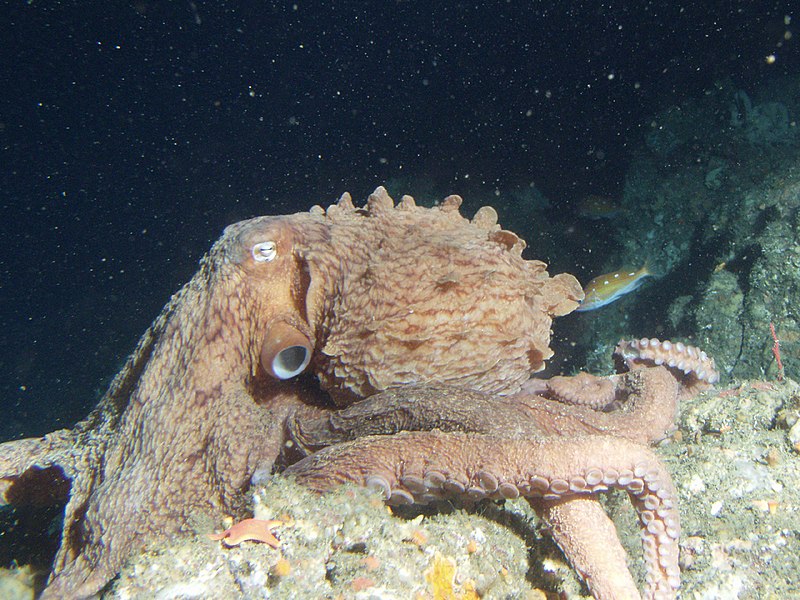 |
| Photo courtesy of NOAA/ R. N. Lea |
Hey Explorers! Time for the Critter of the Week! This week, in honor of Mother's Day, we are spotlighting a very dedicated mother in the aquatic world: the Giant Pacific Octopus. The Giant Pacific Octopus, a type of cephalopod (which inc...ludes octopus, squid, cuttlefish, and nautilus) is the largest species of octopus in the world as well as the longest living octopus. However, they only live four years. Generally, after they breed, both male and female GPOs die shortly after. However, female GPOs actually live long enough to care for and protect the eggs that they lay, not leaving the nest to even eat! These mothers sacrifice their lives for their offspring. Go give your own mom a hug for the dedication she shows everyday to you!
You can read more about the Giant Pacific Octopus below:
You can read more about the Giant Pacific Octopus below:
Tuesday, May 8, 2012
Spiny Lobster
 |
| Photo courtesy of AESBrittany |
It's time for the Creature of the Week! This week, our critter is the spiny lobster! Now, the spiny lobster is not a true lobster. In fact, for those of you familiar with taxonomy, true lobsters and spiny lobsters share ...the same order (Decapoda), but then split into different Infraorders. For those of you who are not familiar with taxonomy, slipper lobsters are different from true lobsters in that they don't have claws (also known as chelae) on their front pairs of legs, they have long antennae covered in spines, and they have a unique larval stage. A recent discovery found something very unique about spiny lobsters: that in addition to being able to navigate using smells and tastes in the water, they can also navigate using the magnetic field of the Earth! Talk about sensitivity!
Read more about this cool invertebrate:
Monday, April 30, 2012
Stoplight Parrotfish
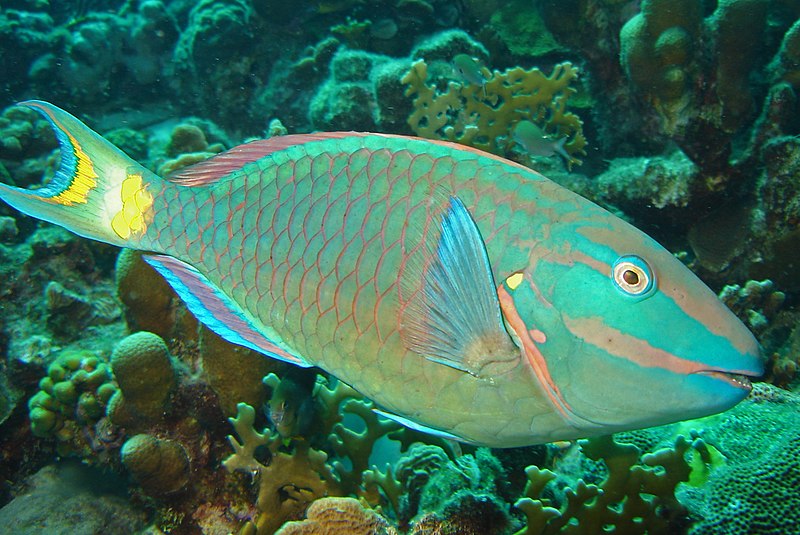 |
| Photo courtesy of Adona9 at en.wikipedia |
 |
| Photo courtesy of Adona9 at en.wikipedia |
It's time for the Creature of the Week! We are going to kick off the month of May with the Stoplight Parrotfish! Parrotfish are so named due to their beak-like mouths, which are made of teeth tightly packed together. These teeth continually grow throughout a fish's lifetime. They use their beaks to scrape algae off of coral, as well as to eat the coral polyps. Some female stoplight parrotfish have the ability to become males when there is a lack of breeding males in a population. This reproductive strategy of being born one sex and being able to switch to another later in life is called sequential hermaphroditism and can be found in other fish, frogs, and invertebrates. Read more about this fascinating fish below!
http://www.flmnh.ufl.edu/fish/gallery/descript/sparrotfish/sparrotfish.html
Thursday, April 19, 2012
Spotted Ratfish
 |
| Photo By: Linda Snook/ MBNMS |
Read more about this interesting creature below:
Monday, April 9, 2012
California Sea Hare
 |
| Photo Courtesy of Columbia University, New York |
Hello Explorers!
Rabbits and hares are among the animals that are best associated with spring (ha ha, a pun!). Our creature of the week is called the California Sea Hare. This animal, however, is no rabbit. In fact, sea hares or sea sl...ugs are among the largest species within the gastropod class (a class which includes snails and slugs). Sea hares, like rabbits, are herbivorous, and many species have the ability to ink when bothered. California sea hares, in particular, are being used in studies of learning and memory neurobiology. Read about all these facts and more about this fascinating animal at the link below!
Rabbits and hares are among the animals that are best associated with spring (ha ha, a pun!). Our creature of the week is called the California Sea Hare. This animal, however, is no rabbit. In fact, sea hares or sea sl...ugs are among the largest species within the gastropod class (a class which includes snails and slugs). Sea hares, like rabbits, are herbivorous, and many species have the ability to ink when bothered. California sea hares, in particular, are being used in studies of learning and memory neurobiology. Read about all these facts and more about this fascinating animal at the link below!
Monday, April 2, 2012
Sabre-Toothed Blenny
Did anyone fall for any April Fools Day tricks? Our creature of the week is a true trickster. It's called the Sabre-toothed blenny, and it relies on the art of mimicry to get its food. Sabre-toothed blennies mimic the coloration and beha...viors of the blue-streaked cleaner wrasse. However, while the cleaner wrasse actually is beneficial to other fish, cleaning them of parasites and dead material, the sabre-toothed blenny is detrimental to other fish. Just watch the video below! And for more information on sabre-toothed blennies, visit:
http://www.wild-facts.com/tag/sabre-toothed-blenny/
http://www.wild-facts.com/tag/sabre-toothed-blenny/
Subscribe to:
Posts (Atom)

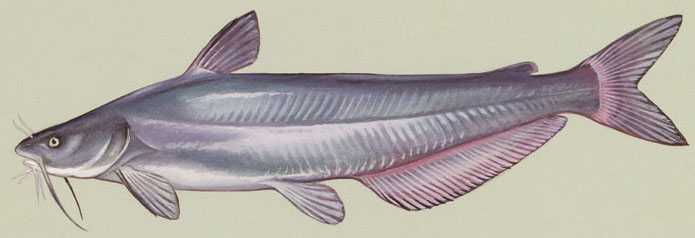
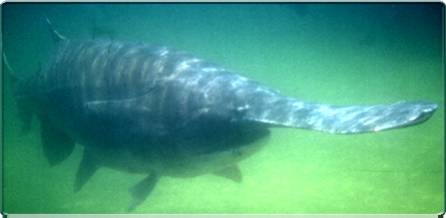
.jpg/798px-Eucidaris_tribuloides_(Slate-pencil_Urchin).jpg)
